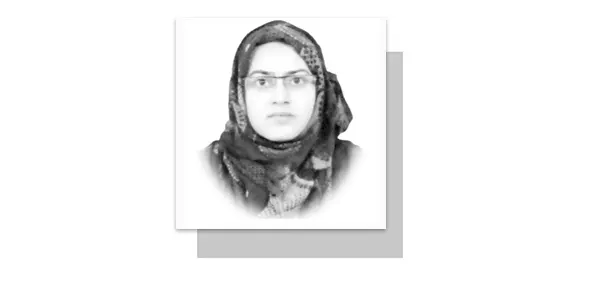THE formulation of Sustainable Development Goals (SDGs) and the introduction of the Blue Economy concept on the principles of the green economy were the major outcomes of the United Nations Rio+20 Conference on Sustainable Development held in 2012. As a follow-up of the Rio+20 decisions, a framework of 17 SDGs along with 169 targets was promulgated in 2015 with a timeline of 2030 for its accomplishment for which the global community, including Pakistan, showed keen interest in addressing the common challenges to mankind by devising appropriate response strategies.
Although Pakistan, being a signatory of SDG Agenda 2030, has established SDG secretariats at the federal and provincial levels, clarity still lacks on the subject in the maritime context. There is a general misconception that only SDG-14 is applicable to the maritime domain. However, if we examine the application of SDGs in a maritime context, we can see that almost all SDGs are applicable in different segments from marine to coastal areas. The lack of understanding about it may be due to the prevalent sea blindness.
Let us take the example of SDG-6 on water and sanitation to overview its relevance in the maritime domain of Pakistan and its linkages with other SDGs. On the one hand, coastal communities in Pakistan lack adequate environmental sanitation facilities as we can still observe open defecation practices in those areas. On the other hand, this situation is further worsened due to poor literacy which comes under the scope of SDG-4. It is pertinent to mention that poverty is another triggering factor for poor health and hygiene in coastal areas which requires actions to meet targets for SDG-1 and SDG-3.
In this context, climate adaptation is also extremely relevant considering the high vulnerability risk to coastal communities related to the provision of resilient water and sanitation infrastructure and facilities in the area. We all know that climate change is the biggest challenge of the 21st century and its impact on coastal communities are far behind the general understanding. Over the past few decades, Pakistan has observed frequent climate extreme events which are critical for adaptation needs considering the high interruption risk towards water and sanitation infrastructure in coastal areas. This clearly links SDG-13 with SDG-6. Provincial governments are required to devise strategies along with local adaptation plans of action (LAPAs) specifically for the coastal areas.
Besides, any action strategy to meet targets under SGD-14 would not be effective without meeting the targets under SDG-6 and SDG-11on sustainable cities and communities as well as addressing the aspects of untreated effluent being discharged in marine ecosystems alongside the coastal areas in Pakistan. So far, it is clear that coastal settlements in Pakistan are highly susceptible to problems related to water vis-à-vis availability of safe drinking water and sanitation needs. As a result of these challenges, waterborne infections are more frequently observed in these areas which further worsen the already unsafe health scenario of coastal communities. Due to the complex interactions between these highlighted problems, there is an urgent need to devise provincial strategies (by both Sindh and Balochistan provinces) to address the requirements of SDG agenda 2030 in the context of coastal areas.
Additionally, the effects of poor water quality and sanitation go beyond simple health issues. As a result of climatic variations in the context of coastal and marine ecosystems of Pakistan, the issue of saline water intrusion into groundwater aquifers further increase the vulnerability of rural communities residing in coastal districts and relying on agriculture vis-à-vis the risk factors to their livelihood and sanitation practices. Their main income source from agriculture is at stake and there is also a concern about food security and malnutrition in the areas. It entails the need to have coherent policies and integrated management system to link and cover the targets under SDG-2 i.e. Zero Hunger.
Moreover, if we take an overview of coastal industries vis-à-vis the linkage of SDG-8 (i.e. Decent Work and Economic Growth) with SDG, there is a bitter example of Ship Recycling Industry at Gadani that lacks basic social welfare facilities and other infrastructure vis-à-vis safe workplace practices and sanitation needs. Similarly, several other small and medium industries in the area have the same issue. The Provincial Government of Balochistan needs to address the issue on a priority basis. In this context, effective water management including rainwater harvesting, best sanitation practices through well-designed drainage systems and elimination of open defecation, pollution control & mitigation, climate resilient infrastructure, etc., are essential. In a nutshell, there is a need for proper provincial planning and strategies for improved environmental sanitation conditions and practices in coastal areas of Pakistan.
—The writer is contributing columnist, based in Islamabad.
Email: sabazeenat3@gmail.com









